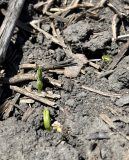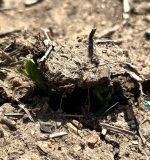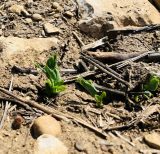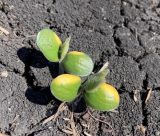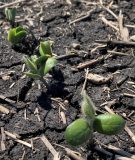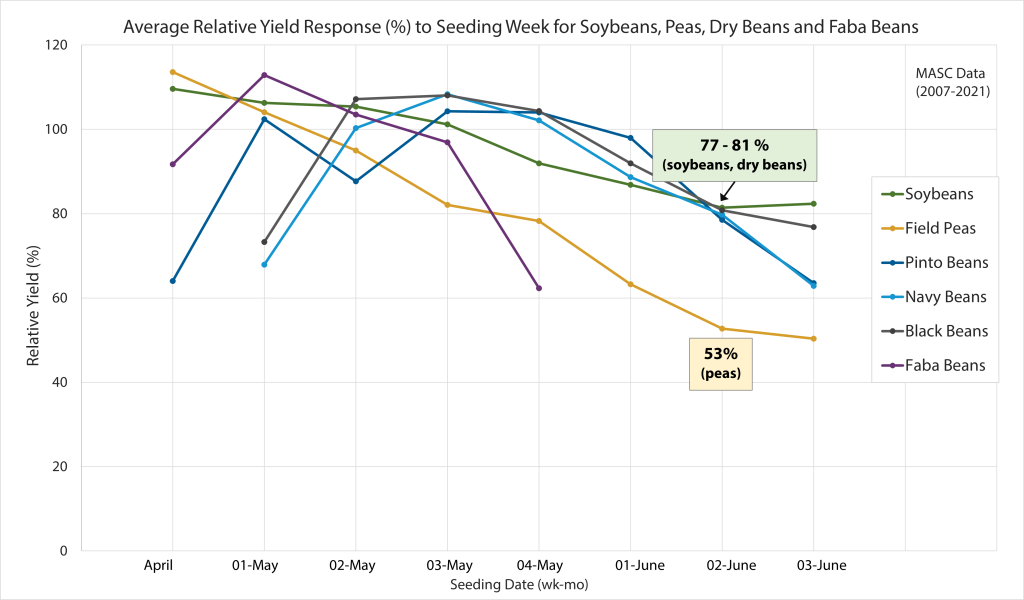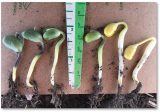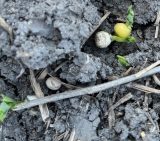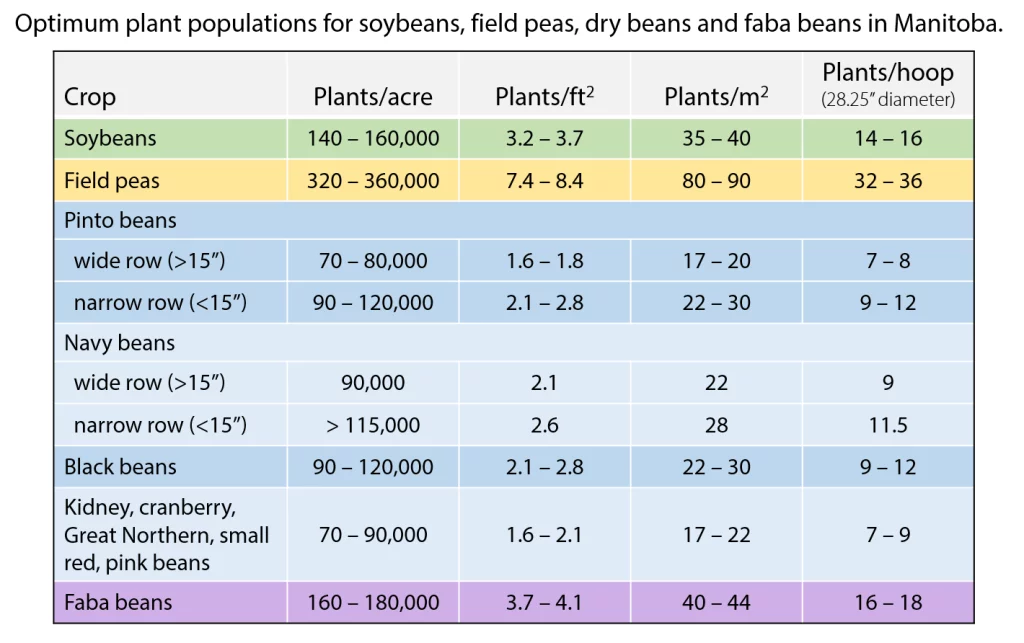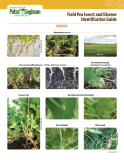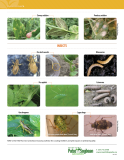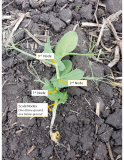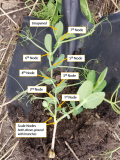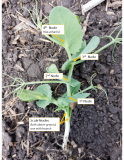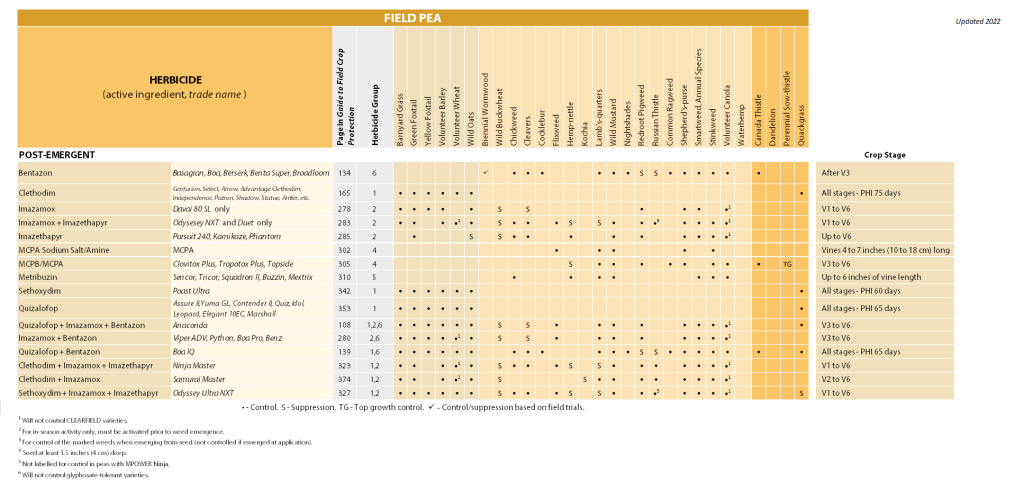June 8, 2022
- Seeding and Crop Update
- Evaluating Seeding Depth
- Plant Stand Assessment
- Scouting for Early Season Diseases
- Scouting for Early Season Insects
- New! Field Pea Disease and Insect Identification Guide
- Determining Field Pea Growth Staging for Herbicide Timing
- Post-Emergent Herbicide Options for Field Peas 2022
- Kochia Management in Pulses and Soybeans
- The Agronomists Podcast – on Early Soybean Emergence
- On-Farm Network Trials Emerge
- Upcoming Events
- Soy Canada’s AGM June 20, 2022
- Crop Diagnostic School July 5 – 8, 2022
Listen to The Bean Report
Seeding and Crop Update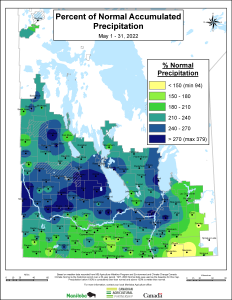
- Seeding has been progressing around the rains. The majority of peas and soybeans have been seeded, with some still to go in before crop insurance deadlines.
- MASC Seeding Deadlines:
- For soybeans, today (June 8) is the last day for full insurance coverage for soybean area 1, with extended coverage offered from June 9 to 13. Tomorrow (June 9) will be the last day for extended coverage for soybean areas 2 and 3.
- For dry edible beans, June 10 is the last day for full coverage in dry bean area 1, with extended coverage from June 11 to 15. June 11 will be the last day for extended coverage for dry bean areas 2 and 3.
- For field peas, June 14 is the last day for full coverage, with extended coverage running from June 16 to 20.
- MASC Seeding Deadlines:
- For most of the province, accumulated rain over the month of May was more than 150% of normal. For the northern parts of Manitoba, rainfall amounts reached above 200% with some areas accumulating over 300% of normal.
- With a wide range of seeding dates crop staging is variable. Soybeans are germinating to VE stages. Field peas and faba beans are emerging to the V3 stages. Dry beans are beginning to emerge.
Relative yield response to seeding week (wk-mo) for soybean and pulse crops with data for seeding in the second week of June highlighted.
Evaluating Seeding Depth
With our challenging wet spring conditions and short early windows for seeding our target seed depth may differ from what we were able to accomplish. Assessing seed depth can be done while seeding but also post-emergence.
- Post-emergent seed depth assessment can be done by measuring the length of white space along the hypocotyl from the root hairs to the green tissue.
- Does your equipment influence seed depth? If your seeder has openers that dig a deep furrow and create bigger hills, and/or if you have wide packing wheels that push more soil over the furrow, your seed may end up deeper than intended. Land rolling may increase the effective seed depth by closing furrows, and equipment often has a 0.5-inch variation in seed depth among openers or wings. Check seed depth after rolling to measure this in your fields.
- Symptoms of deep seeding may include a swollen hypocotyl, elongated hypocotyl arch, yellow cotyledons above or below ground and/or loss of cotyledons. Deep seeding is considered to be >1.75 inches, according to recent research from the Soybean and Pulse Agronomy Lab in Manitoba.
- Symptoms of shallow seeding include seed stranding, where seeds did not make it into the furrow, desiccated seeds within the furrow that partially germinated, then ran out of moisture or reduced plant stand, in the case of emerged seedlings.
Check out our Scouting Session Video on evaluating Soybean Seed Depth – YouTube or visit here for more information on assessing soybean seed depth.
Plant Stand Assessment
Assessing plant stands each year is an important tool for estimating seed survival to inform future seeding rates. By determining the number of live plants per acre you can compare this with your seeding rate, also taking note of plant uniformity and seeding depth.
MPSG’s Bean App plant stand assessor tool is available to calculate plant populations:
- Use the fixed area method to calculate plant populations if using a hoop or a square or the row length method if using a measuring tape or stick.
- Enter your hoop diameter, area of square or length of row measured and the number of plants in that area.
- Assess multiple spots throughout the field and let the tool calculate plants/acre for you.
- Check poor areas as well as good areas and investigate reasons for poor emergence.
- On hillier ground, ensure to check the top of the hill, mid slope and bottom of the hill.
- The app feedback is specific to soybeans, but the calculator itself can be useful for other crops.
Scouting for Early Season Diseases
The truth is that there is a temperature for every disease. Once the crop is out it is a good time to scout for plant stand assessments but also early season diseases and insects.
- Root rots in all pulses caused by Fusarium, Rhizoctonia and Pythium – check areas of patchy emergence, yellowing or wilting.
- Phytophthora sojae in soybeans
- Aphanomyces in peas
- Collect a sample to send to the Crop Diagnostic Lab for identification. This service is free for all farmers!
Insect and Disease Scouting Calendars for each crop type:
- Soybean Insect and Disease Scouting Calendar
- Field Pea Insect and Disease Scouting Calendar
- Dry Bean Insect and Disease Scouting Calendar
- Faba Bean Insect and Disease Scouting Calendar
Scouting for Early-Season Insects
Cutworms
- Generalist pest of pulses and soybeans.
- Plants will be cut or have chewed-on cotyledons and stems. Dig down and sift through soil to shake loose any larvae. They may be as deep as 4 inches in the heat of the day and are easier to find during the evening when it is cool.
- Soybean and dry bean nominal threshold: 1 or more cutworms (<2.5 cm in length) per metre of row, or 20% of plants cut.
- Pea and faba bean nominal threshold: 2-3 cutworms (<2.5 cm long) per square metre.
- Peas and faba beans can compensate for some cutworm damage by regrowing from scale nodes. Foliar insecticides are available and best results are from applications made in the evening.
Wireworms
- Generalist pest of pulses and soybeans.
- Check areas of patchy emergence until V3. Dig into the soil to assess damage to underground parts of young seedlings.
- If crop loss is excessive, reseed with an insecticidal seed treatment.
- Research has shown that flooding or prolonged soil moisture reduces wireworm populations.
Seedcorn Maggots
- An infrequent pest of soybeans and dry beans in MB.
- There is a higher risk in fields that were planted early (cold, wet soil), with recent tillage or manure application, and sandy to silty soil texture.
Pea Leaf Weevils
- A pest of peas and faba beans in western MB.
- Notches around leaf edges are a sign of adult weevil feeding. Weevil larvae below-ground burrow into nodules and cause yield loss. Scout from V1 through V6 to look for leaf notching.
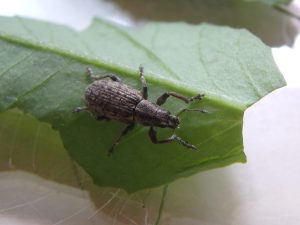
Pea leaf weevil adult that overwintered in a perennial clover patch near Gladstone – May 30, 2022. - Pea economic threshold: 30% of plants with notches on the uppermost closed stipule.
- Faba bean nominal threshold: 15% of plants with notches on the uppermost bifoliate leaf at V2 to V3.
- While economic thresholds for foliar sprays are available, seed treatments are more effective than foliar sprays due to the long window of weevil emergence and multiple migrations into the field. Cultural management tools are currently being researched.
- If you are growing peas or faba beans this year, MPSG would like to survey your field for the presence of this new-to-MB pest to determine its distribution and abundance! Biosecurity protocols will be followed. More information about the survey protocol here. Sign your field up for this survey by contacting Laura at 204-751-0538 or laura@manitobapulse.ca.
New! Field Pea Disease and Insect Identification Guide
This visual guide to pea insect and disease identification in Manitoba was created to supplement the Field Pea Insect and Disease Scouting Calendar. Refer to this new picture resource guide to help identify common field pea pests while scouting during the growing season.
Determining Field Pea Growth Staging for Herbicide Timing
Accurately identifying field pea growth stages will help avoid herbicide injury. Along with the Field Pea Growth Staging Guide, here are some tips to keep in mind when staging peas:
- Peas always have two scale leaf nodes at the base of the plant. These may be above or below ground. Scale leaves are smaller than true node leaves and branches may develop from these scale nodes.
- The first true node is the first stipule (leaf) and tendril that unfurls. Only true nodes are counted when staging for herbicide timing. If unsure, err on the side of caution.
- Subsequent nodes are counted once the clam leaves unfurl.
- Most herbicides should only be applied up and including to the 6th true node stage (V6) to avoid injury. Base staging off of the majority of plants in the field.
Post-Emergent Herbicide Options for Field Peas 2022
Kochia Management in Pulses and Soybeans
- Kochia populations are generally resistant to group 2 herbicides. In 2018 surveys from Manitoba, 59% of kochia populations were found to be resistant to glyphosate and 1% of populations were dicamba-resistant. There were two fields where populations were resistant to both glyphosate and dicamba.
- Kochia has a massive seed set, but only lasts one to two years in the weed seedbank. Key management strategies involve preventing this weed from going to seed.
- Take advantage of this low seedbank persistence by controlling patches and escapes. Mow, bale, spot till, burn or hand pull surviving kochia plants before they set seed.
- Manage marginal and saline areas of the field.
- Use crop rotation. Choose cereals ahead of pulses to reduce kochia going into the pulse year. Cereals have more effective herbicide options for control and are a more competitive crop.
- Work pre-emergent options into your herbicide program to manage kochia.
- Utilize narrow row widths, adequate to high plant populations and appropriate fertility strategies.
- As in-crop herbicide options for kochia management in pulses and soybeans are limited, target this weed while it is still small (<4”).
Last week’s episode of The Agronomists discusses early soybean emergence with Dr. Dave Hooker, University of Guelph and Laura Schmidt, Manitoba Pulse & Soybean Growers. Watch the episode here!
On-Farm Network Trials Emerge
Last month was the equivalent of Mother Nature saying “please hold” for weeks while she played the sound of rain in the background. But finally, farmers got through to the other side. Earlier this week the On-Farm Network (OFN) took a field trip (pun intended) to the Beausejour area and witnessed one of the first soybean trials emerging from the ground. It was a great opportunity to learn the ins and outs of OFN data collecting, GPS navigating, weed identifying, soybean growth staging, and the importance of field safety and biosecurity. With eight pea trials and 12 soybeans trials currently in the ground, and more to come, it’s certain to be a busy spring visiting trials/fields throughout Manitoba.
Want your field added to the trial list? Curious how an on-farm trial works? Give Leanne a shout at 204-751-0439 or leanne@manitobapulse.ca.
Upcoming Events
Join Soy Canada’s AGM on June 20, 2022
Soy Canada’s 8th Annual General Meeting will be a hybrid event this year with the in-person portion at the Fort Garry Hotel in Winnipeg, Manitoba from 11:00 to 1:00 CST on Monday June 20. The event will also be available virtually, through Zoom.
Soy Canada directors and the executive director will speak about the organization’s activities over the last year and what’s on the horizon. Come hear about the soy value chain’s efforts on industry leadership, market access, market development and coordination on innovation and research. Keynote speaker, Manitoba’s Minister of Agriculture, the Honourable Derek Johnson will provide perspective on what’s ahead for Manitoba agriculture.
Register for the event here. For additional information all are welcome to reach out to Emma Coffin at ecoffin@soycanada.ca.
Crop Diagnostic School on July 5 – 8, 2022
The Manitoba Crop Diagnostic School has been running since 1996 with approximately 400 – 500 people attending each year. This comprehensive hands-on approach to learning attracts new and past attendees to take part each year. In 2022, Crop Diagnostic School will be hosted in-person from 8:30 am to 3:00 pm daily at the Ian. N Morrison Research Farm in Carman.
To register go to: Crop Diagnostic School 2022 Registration
Have pulse or soybean agronomy questions this growing season? We’re here to help! Contact Laura (204-751-0538, laura@manitobapulse.ca) or Jennifer (204-751-0737, jennifer@manitobapulse.ca).

